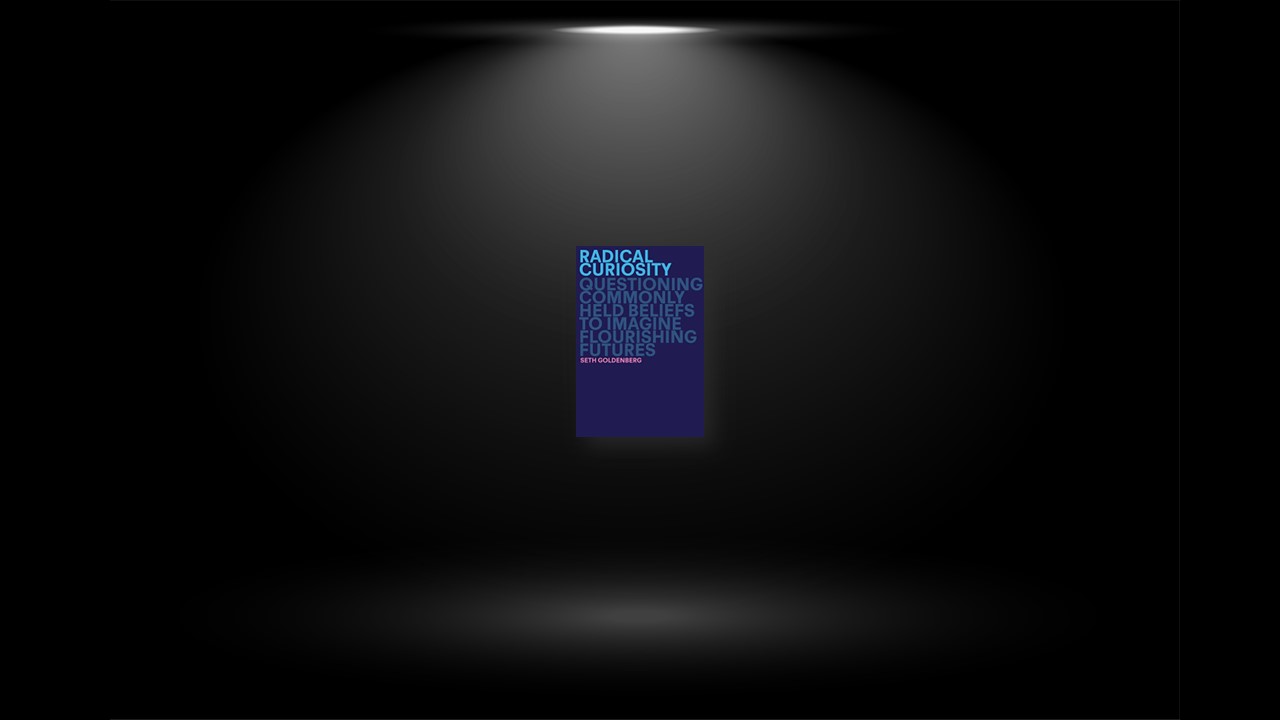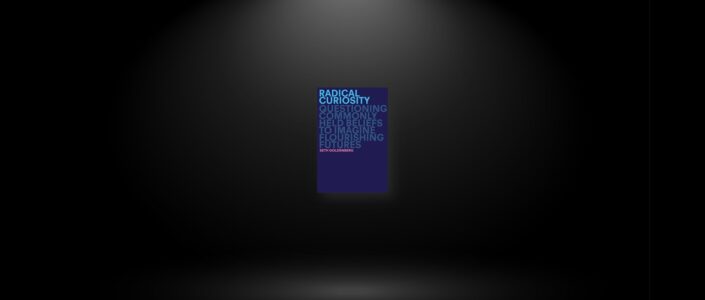Limited Exposure to Diverse Experiences
There is a vast difference between informational knowledge and experiential knowledge. Experiential knowledge is a multisensory witnessing rather than a Scantron-tested commodification of information. As the legendary Maya Angelou says: I’ve learned that people will forget what you said, people will forget what you did, but people will never forget how you made them feel.
Experiences are profound instructors. Exposure exponentially increases our comprehension of the forces at play in the world, increases the lexicon available to us for what the world can become, and increases our capacity to imagine how we may inhabit that world.
Living through the language of experiential knowledge gives us the confidence to not fear the opacity of the unknown. Exposing ourselves to diverse environments, situations, and untrained arenas converts the unknown from friction to adventure, welcoming the invitation for us to be changed along the way. By extending our geographic radius, we extend the radius of our worldview. With every mile we travel, we overturn our assumptions and question the false constraints holding us back. These are the seeds of transformative learning. The real world is a better classroom than the artificial environment we have come to call classroom.
Unlearning as a Form of Activism
Learning has come to mean the acquisition of new skills. Unlearning requires the skill of stepping outside of existing mental models and embracing new mental models. Metacognition is the most important skill of the twenty-first century.
With this in mind, we need to consider the fundamental difference between “education” and “learning.” Similar to the labor-versus-leisure dichotomy, this contrast illustrates a critical pedagogical difference. Where do the power structures and agency of learning reside? Who has power: the learner, or the educator and the institutions that deliver education services? Let’s frame this dichotomy as the formality of educating versus the experience of active living as the means for learning.
Is what we refer to as “education” likely a legacy narrative built upon antiquated structures and no longer the best expression of either the original intent of education or the potential of its future? Ivan Illich proposed that school prepares for the alienating institutionalization of life by teaching the need to be taught. Once this lesson is learned, people lose their incentive to grow in independence; they no longer find relatedness attractive, and close themselves off to the surprises which life offers when it is not predetermined by institutional definition.
Are we so numb to when life is our teacher that we can only recognize learning when it has been tagged, packaged, evaluated, and offered as currency? This strained relationship between the formality of educating and the experience of active living may be best expressed by Einstein when he said: The only thing that interferes with my learning is my education.
We Don’t Talk Anymore
We are losing our ability to converse, to exchange ideas, to find common ground, to live in dialogue and find cooperative ways to move forward. Divisiveness vaporizes the appetite for inquiry. It undermines the hunger for exploration, shutting the door before the pleasure and joy of conversation can even begin. And conversation is, truly, a pleasure. There is even new evidence emerging that our brain waves might synchronize as people interact and cooperate on certain tasks. But we are shutting so many doors. Fewer and fewer of us may have the opportunity to experience the phenomenon of brain wave synchronization.
Umair Haque, the author of The New Capitalist Manifesto: Building a Disruptively Better Business, writes about this unique phenomenon—about what happens when a society stops being able to communicate—in a piece that hits close to home, “Americans Don’t Know How to Talk to Each Other Anymore”:
What does trauma do to us? It makes us hypervigilant. It makes us paranoid. We are constantly scanning the world around us, looking desperately for threats. To our existence. Annihilating threats. We always feel at risk of annihilation. We have this sense of precariousness. But isn’t that how American life is? What is American life? As I often say, it’s a bitter, bruising battle for existence. Americans have to get up every day and compete for things everyone else in the rich world takes for granted, because people in Europe and Canada simply give each other the basics. But Americans have to compete brutally for healthcare, medicine, a little bit of money, work, shelter, food, transport, keeping the lights on.
We don’t talk anymore. It’s not simply a communication problem. It’s a civic problem. At this point our polarization is breeding more polarization and our spiral has led to a kind of population-scale trauma. Our very way of life is reinforcing our extreme state of mind. The only medicine for this mental health pandemic is dialogue. Not because a conversation directly fixes the mess. But because conversations lead to fixing the mess: slowing us down, changing our tempo, and putting us in a state of hearing each other, able to gain new insights and engage in peaceful cooperation, shrinking the distance between the two polar end points. We’d all do well to experience our brain waves synchronizing with those of another person.
How to Ask an Essential Question
When asked how he would approach solving a problem if he had just one hour to do it, he replied: If I had 60 minutes to solve a problem and my life depended on it, I’d spend 55 minutes determining the right question to ask. Once I had the right question, I could easily answer it in the remaining 5 minutes.
We need to start investing more time in understanding the problem. And if we can treat problems as questions, we can better understand what we are solving for and align on the necessary steps to get there. In Einstein’s model, more than 90 percent of the problem-solving process would be spent on the activity of problem-framing: the detective work that leads to better questions, and in turn enables the most valuable insights. This is the model today’s leaders must emulate in order to meet today’s challenges in bold and innovative ways.
Essential questions embody several characteristics. Asking these deeper, more essential questions is Radical Curiosity at its best.
- Essential questions invite us to revisit ideas we have taken for granted. They challenge us to reconsider what we know, to look at the familiar with fresh eyes to see something new.
- Essential questions strip away the veneer and seek to get closer to the core motivations. They challenge us to understand why things happen rather than what things happened.
- Essential questions allow for a wider array of contributing variables. They challenge us to consider unexpected connections in order to unlock transformative insights.
- Essential questions focus on longer time frames, looking further out into the future. They challenge us to move beyond the present and allow for the inclusion of past and future considerations.
- Essential questions shine a light on our biases, making them transparent. They challenge us to confront the limits of our thinking.
- Essential questions resist the personal but embrace the empathetic. They challenge us to see the humanity of a situation but inquire into the context.
- Essential questions contain absurdity, celebrating an inversion of expectations. They challenge us to recalibrate our assumptions through humor.
- Essential questions are intimate. They challenge us to forge trusted social contracts with colleagues, collaborators, and partners.
- Essential questions break disciplinary, sector, and departmental barriers. They challenge us to see holistically across the isolated, tightly managed compartments through which we’ve organized our lives and our organizations.
- Essential questions empower critical thinking. They challenge the legacies of powerful ideas in the collective wisdom and originate new knowledge.
May We Never Grow Up
To seek greater understanding of the world, we must start with the recognition that ideas are in flux, iteratively redefining themselves all the time. Core concepts we may have been taught to think of as static are in fact constantly in motion. This is foundational to Radical Curiosity because it gives us permission to challenge traditions that others believe to be sacred.
Our lives—and the ideas that constitute them—are iterative works in progress. Humans understood this as early as the sixth century b.c., when the Greek philosopher Heraclitus insisted that change was inevitable and ever present—that we are constantly in the process of “becoming.” As Heraclitus famously declared: “No man ever steps in the same river twice,” meaning that everything flows, nothing stands still. Because youth is itself an in-between time, existing in the space between childhood and adulthood, it is an era of becoming.
In the mid-1800s, the French poet and essayist Charles Baudelaire wrote: The child sees everything in a state of newness….Nothing more resembles what we call inspiration than the delight with which a small child absorbs form and colour….Genius is nothing more nor less than childhood recovered at will.
Artists, entrepreneurs, inventors, and innovators seek to hold on to this aspect of youth: a time in which every encounter is new, pregnant with possibility. After all, isn’t this what children instinctively do, and Walt Disney spent decades trying to do—imagining and building new worlds?
In 1966, Robert F. Kennedy delivered his most impactful speech, known as the “Day of Affirmation” address (or the “Ripple of Hope” speech), to more than 18,000 students in Cape Town, South Africa, stirring an optimistic narrative to confront apartheid and justice in both South Africa and the United States. While the address is largely remembered for how it shook up the politics around civil rights issues in the two countries, it also contains a stirring reflection on youth as a state of mind: This world demands the qualities of youth: not a time of life but a state of mind, a temper of the will, a quality of imagination, a predominance of courage over timidity, of the appetite for adventure over the life of ease.
Children are beginners at being in the world. But even as adults, we are constantly finding ourselves in situations, contexts, and cultures where we feel like a fish out of water, where we’re still figuring out the rules of the game. We may do grown-up things like finding parking spaces and paying our bills. But we shouldn’t equate this with growing up.
The world needs our youthful courage now more than ever.


